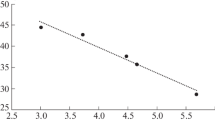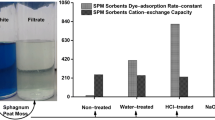Abstract
PLANT tissue can be petrified by impregnation with natural waters with a high concentration of dissolved silicate1. This occurs commonly in springs issuing from volcanic deposits in New Zealand, Ireland and Yellowstone Park in America. The process is easily duplicated in the laboratory in the following way. Small pieces of plant material (1 cm3 or less) are placed in 250 ml. polyethylene beakers, 50–100 ml. of deionized H2O (pH. 6.0, which is adjusted by dilute HCl) is added; after 5–10 min, 2–5 g sodium metasilicate (Na2SiO3 : 9 H2O) is stirred into the beakers, which are then allowed to stand undisturbed for 12–24 h. The pH rises to 14. The material is then washed several times with deionized H2O, allowed to soak for 30 min in 2 N HCl; organic material is removed by wet ashing, using boiling concentrated nitric acid (1 part) and concentrated chromic acid (1 part)2.
Similar content being viewed by others
References
Vail, J. G., Soluble Silicates, 1 (Reinhold, New York, 1951).
Parry, D. W., and Smithson, F., Ann. Bot., 30, 525 (1966).
Weed, W. H., US Geol. Survey, Ninth Ann. Rep., 613 (1889).
Drum, R. W., Science, 157, 581 (1967).
Drum, R. W., J. Cell Biol., 35, 34A (1967).
Author information
Authors and Affiliations
Rights and permissions
About this article
Cite this article
DRUM, R. Petrifaction of Plant Tissue in the Laboratory. Nature 218, 784–785 (1968). https://doi.org/10.1038/218784b0
Received:
Issue Date:
DOI: https://doi.org/10.1038/218784b0
- Springer Nature Limited





